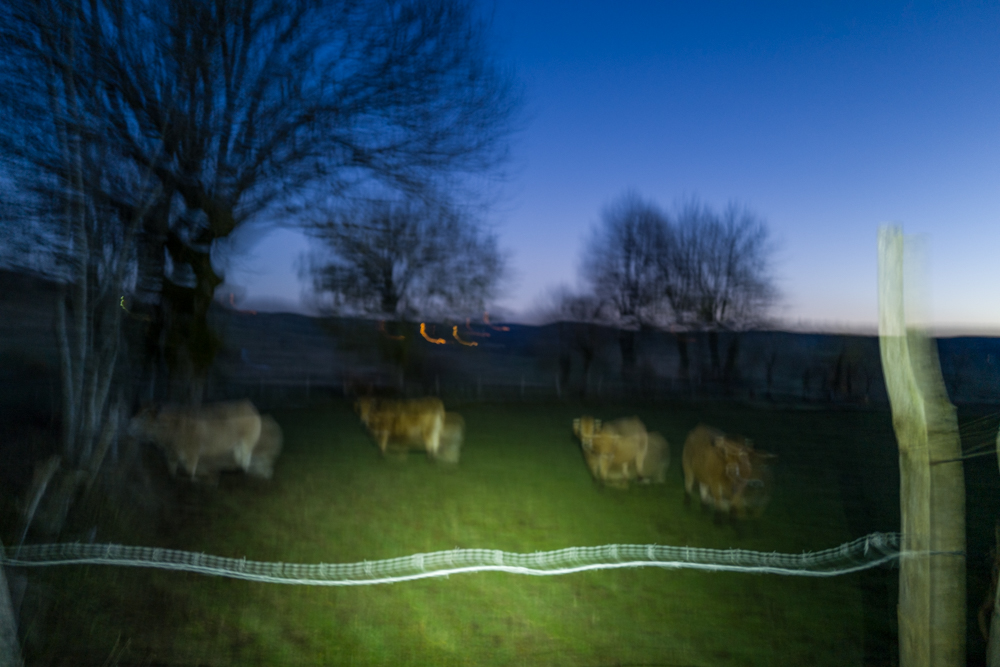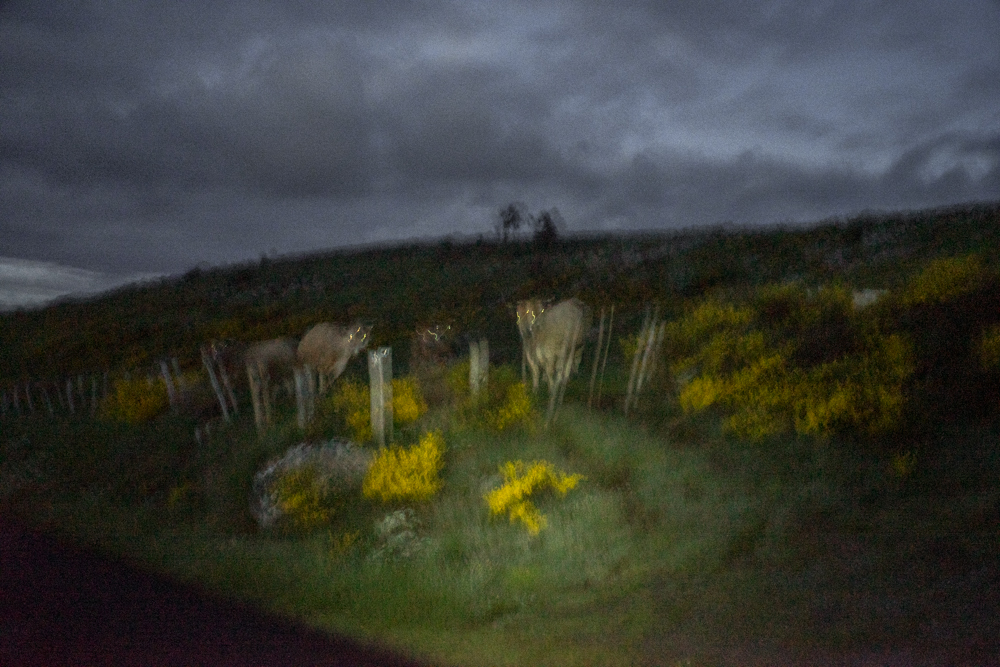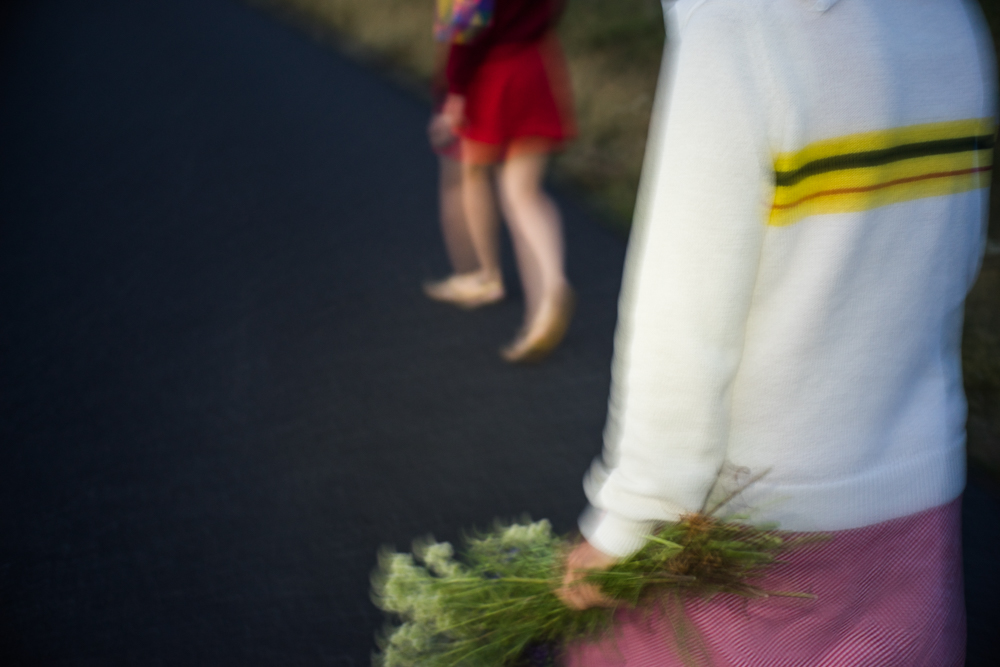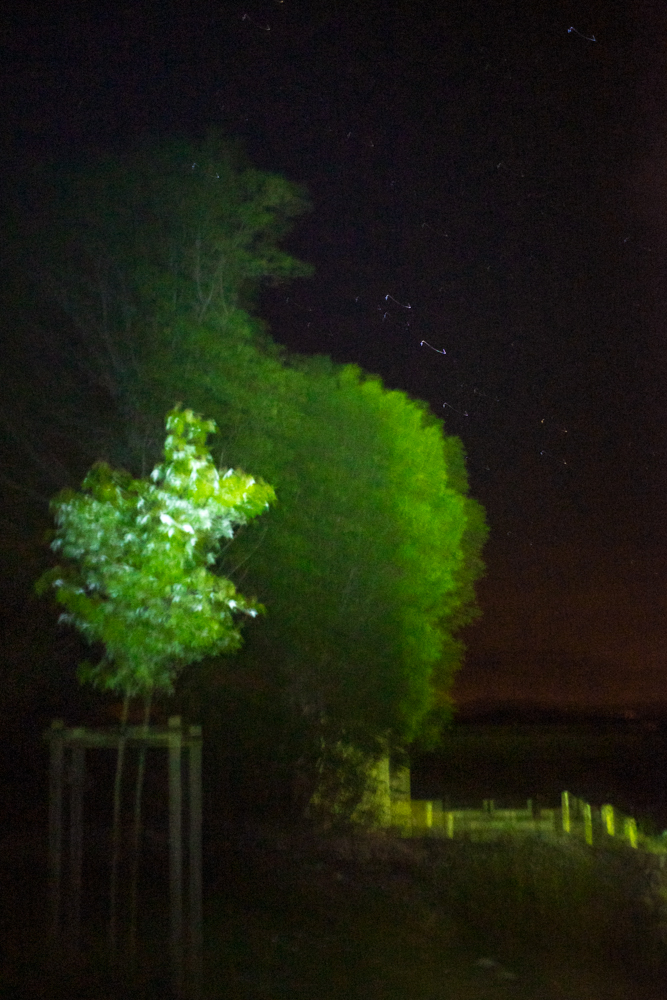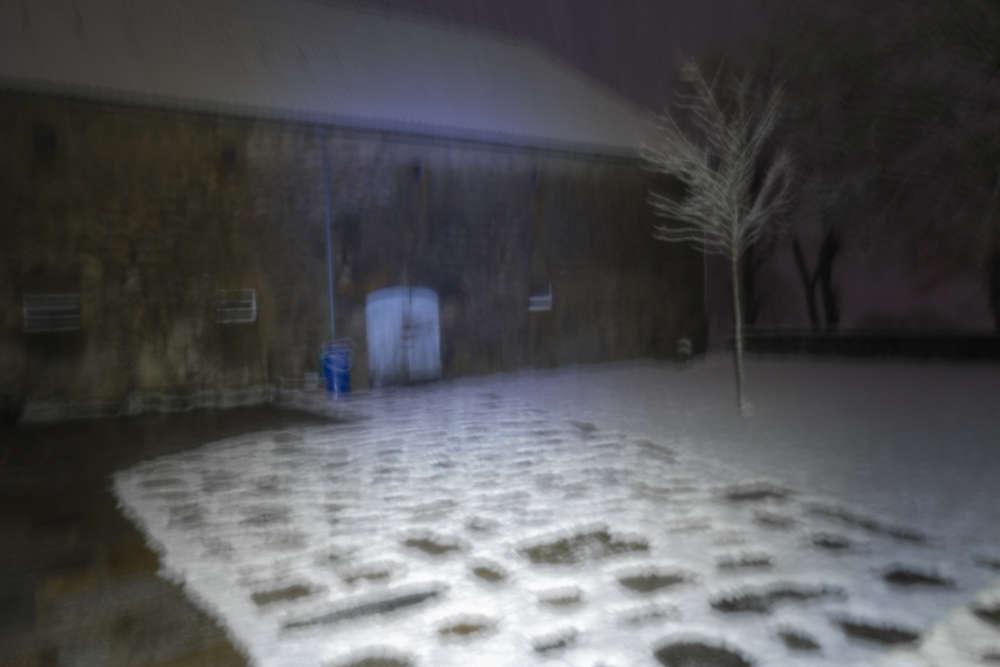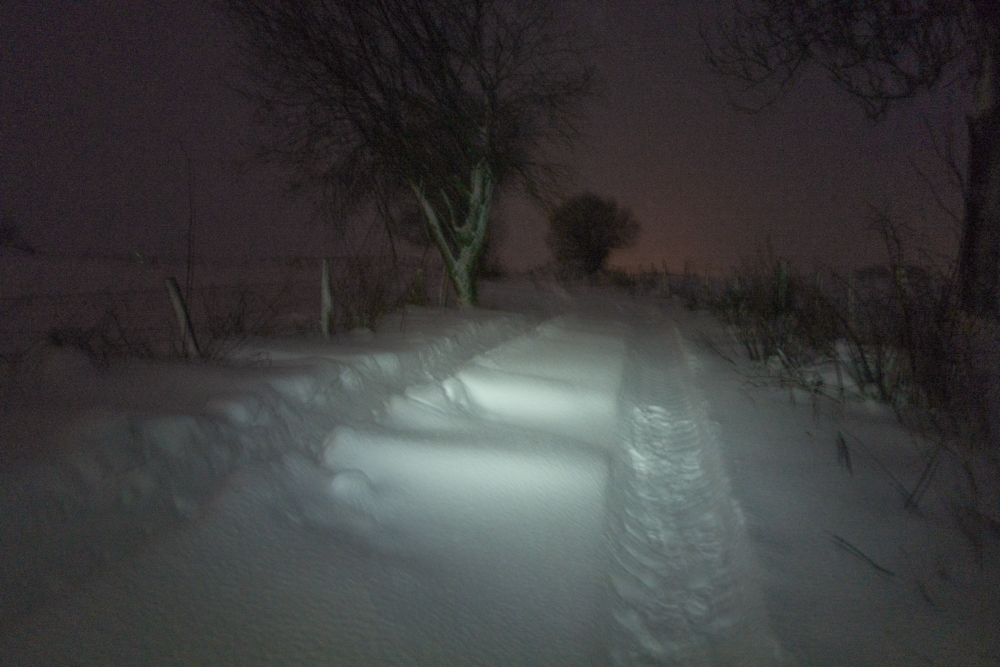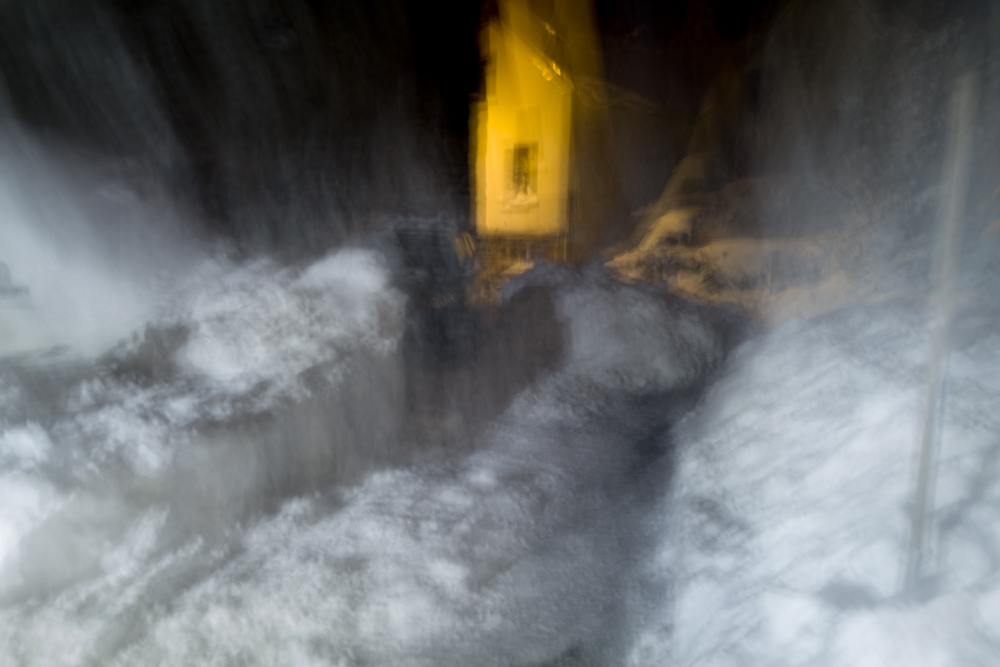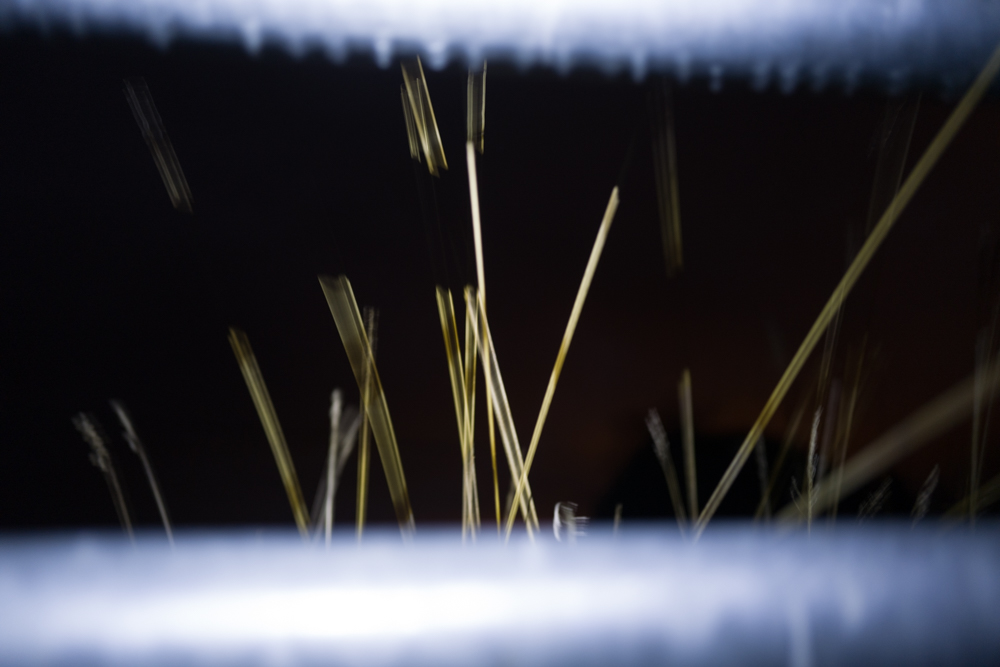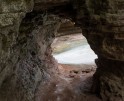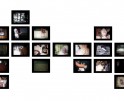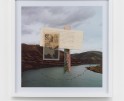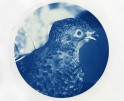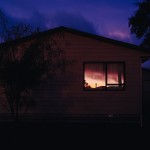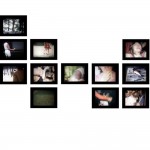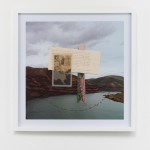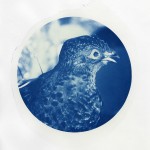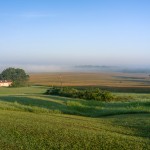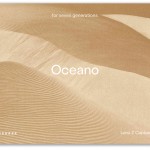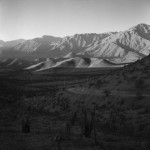Making Darkness Visible: Daniel Anizon
As a photographer who walks my city’s streets at twilight, I’m often alone. That is why it gives me special pleasure to appear in and present a group of my fellow night photographers under the rubric, “Making Darkness Visible.” The five of us represent a variety of approaches that suggest the rich possibilities of night photography. As you will see, we work in color or black and white, and in different environments, including cities and rural or suburban areas. Wouter Vanhees and I each wander through our chosen cities, often on deserted streets, chronicling the transitions and juxtapositions of the urban landscape. Daniel Anizon seeks to recapture forgotten unconscious images by photographing the periphery of his vision as he walks at night through the countryside. Jill Waterman documents the social rituals of New Year’s Eve in different countries, celebrations that fill the darkness with artificial light. MJ Sharp takes as a theme, what most of us implicitly believe, that the darkness of night is a precious and endangered resource. Her nighttime photographs of ancient stone monuments in Cornwall, UK, are lit by moon and stars. And finally, all of us hone our night vision and, in Jill Waterman’s words, rely on our “camera’s ability to record things that are beyond the capabilities of human [sight]” to make the darkness visible.
After a doctor’s degree in Economics from Paris IX University, Daniel Anizon spent 3 years traveling around the world. Though he did not have a camera then, this experience led to a love for travelling that would eventually become an important part of his work as a photographer. He received the “International News” Award at the Rencontres Internationales de la Photographie in Arles, France, in 1984. In 1987, he received the Villa Medicis Hors les Murs Prize from the French Government, which allowed him to spend six winter months in Canada. He was invited as an Artist in Residency at the Banff Center for Arts, Canada, in 1988, and later at the Villa Montalvo, California, in 1999.
As an independent photographer, traveled extensively in Northern Europe, Canada, USA, Russia, Vietnam, Eastern Europe and more recently in Japan. Numerous exhibitions in Arles, France, Paris, New-York, San Jose, California, Canada, Belgium, Germany, Austria and Switzerland. Personal show « Vert mi-nuit » (recent works 2018-2021) in september/october 2021 at Maison Heinrich Heine/Fondation de l’Allemagne, Paris.
His work is in a number of collections like Musée d’Art moderne de la Ville de Paris, Bibliothèque Nationale de France, Paris, and with private collectors in France and abroad. Was a member of Agence Paysage(s) in Paris, and represented by Galeries Chambre avec vues, Brun Léglise and The Box in Paris, and June Bateman Gallery in New-York City. Lives and works in Paris and Aubrac, France.
Depth, not only of field.
I have always done a lot of traveling. The more I travel, the more I am interested in what I can’t see well. Walking in the street, I usually look ahead but the pictures I shoot, be they non-focused or blurred, come from the sides. I call it side-seeing. It evokes response coming from deep into memory because what attracts you is that which refers to unconscious memories from the past. If I wait too long, my first impression will be polluted. Quick and deep, that’s Photography.
Always what attracts me has several layers because the image is shot through windows or drops of rain, mist or snow. This gives the feeling of several pictures in one. Photography translates a three-dimensional world onto two-dimensional piece of paper. Without even the thickness of paint. Depth, not only depth of field, helps restore the original three dimensions. It makes the picture richer and thicker.
In the end I think the same is true for a picture : a rich picture is the one that hides or generates another one in the mind of every person looking at it.
This series “VERT MI-NUIT” talks about landscapes and personal feelings in landscape. I started this project around my home in the center of France, a high plateau called Aubrac. I use to walk around nightfall or later to experiment night photographing. Later on, in 2018, when I traveled to Japan I found that what I did here could be enhanced by what I was starting to do over there. I went to Japan a second time in 2019, until the pandemic halted everything. But that gave me time to think about working here and there.
Night vision here helps me to develop my approach : taking advantage of what I see here in the dark, when you have mysterious shadows all around, to imagine other images. Going from figurative Photography to more abstract images. Darkness allows me to “break” colors in pieces like in a broken windshield. I need to go over there to work here and vice versa.
What experiences did you have in growing up that brought you to photography?
Nobody offered me a brand new camera when I was 4 years old ! Actually, I started Photography relatively late, when I was 35. And it took me many years after that to find out what made me a photographer. In the 70’s, I did a round the world trip, all by myself, during 3 years. Half hitchhiking, half sailing on yachts across the atlantic and pacific oceans. Doing that, you are moving in an environment of various landscapes all day and every day for more than 1000 days. This represents a tremendous accumulation of images that you have seen, the vast majority of which I can’t even remember of. If you have a camera, you may come back home with a few hundreds pictures of what your eyes saw. I did not. But everything is somewhere in my head, now for ever. Fortunately I believe, all is confused, like blurred in my brain which uses it as a raw material, a kind of compost to create other images from my own imagination. And night photographing does help.
At what point did you switch your focus to photographing after dark and what led you to that decision?
It did not come overnight ! When I started Photography in the 1980’s, I first did silver BW printing. For that, you use light to look closely through your negative to take notice of what is in it and how you choose to print it later. This tought me that BW photo does not mean the lack of colour ! It means that you must explore everything between B and W, like a kid learning alphabet. One of my first series called « Hanseatica » http://danielanizon.eu/commandes-photographiques/hanseatica/ was about harbours in the north of Europe. I liked the atmosphere of rain and dusk in those cities. It was my first experience with night photographing. After that, I worked in Canada http://danielanizon.eu/distinctions/canada/ in winter and noted all the changes in whites along the day, and also at dark. Later, I did 4 trips to Russia http://danielanizon.eu/vintages/russie/ during the turmoil after petrestroika in 1995-98, from Mourmansk in the north to Norilsk in Siberia and to Astrakhan in the south. At that time, everything looked like a variation of greys there. Now I am doing digital colour Photography, most of it at night/dusk and I think that it comes from both my experiences in B/W/greys and from my obsession of exploring new variations in colors and light, using dark as a generator of new images. I think that photographers of my generation are lucky because our experimentation with the negative is very useful in digital photography.
What is special about making work at night?
I am not interested in showing reality as such. As a photographer, my concern is to use reality as a starting point to create new images. A painter may start from scratch, though s.he also builds a painting from her/his experience of life. To transform reality, I use all kinds of tools : glass, car windshield, fog, rain, snow, mosquito nets…
I discovered that dark is also a wonderful tool : while photographing, me and my camera move all the time in such a way that, if it is relatively dark, my photos are often blurred. You may also use focusing or anything else, no matter as long as it turns to an image, a personnal vision. For me, it is like starting from a blackboard and using a headlamp as a pencil for drawing. And this light emphasises colors, especially greens, but also blues, yellows…It also helps me imagine new images that I may build later, though I am not conscious of that when I shoot. I will come back to this later on.
Do you see architecture differently at night?
I considered becoming an architect when I was a teenager. Architecture looks different at night because talented designers do their best to enhance structural features or details thanks to specific light engineering. From my windows in Paris, I can observe everyday and every night the Eiffel tower 5 km away. I prefer it at daylight because daylight changes everyday and many times along the same day. At night it is always the same, except when it is raining or foggy or, even better, when it is snowing. Architecture night photography is an urban thing, which means that the background is never really dark. In the countryside where I work now, it is really dark. In my « Vert mi-nuit » series that you can see today, everything around me is dark. Dark is dark there.
For the second part of this series, which is in progress (see further), I chose Japan. Japanese cities at night look like a huge theater. All details are visible there and it is true that I find architecture there looks very different, more present and more poetic in the same time, at night than during the day.
Who and what have been your inspirations?
I know and admire many photographers but I must say that my inspiration comes more from musicians and painters than from photographers.
Years ago, I could listen to Richard Wagner’s Tetralogy for hours while working in my darkroom. Olivier Messiaen, Igor Stravinsky or Duke Ellington, as well as many contemporary music composers are my favorites. As regards painters, I like Goya, Tiepolo (in the sky for eternity !), Hans Hartung… I have a special mention for two painters who both use the concept of thickness through layers : french painter Pierre Soulages (now 102 years old) paints layers and layers of black paint and, despite what you could think, he is able to create a fantastic light with this. I am fascinated also by Mark Rothko’s « colorsfield » and by his method to apply a thin layer of binder mixed with pigment directly onto canvas and to paint significantly thinned oils onto this layer. This seems to me close to the matter of Photography, a thin film initially, and now almost immaterial but still visible.
What is next for you?
This « Vert mi-nuit » series that you can see today is in fact the first part of a work in progress. I already had a personal show in « Maison Heinrich Heine » (German Foundation), in Paris last year https://www.maison-heinrich-heine.org/manifestations-culturelles/2021/septembre/vert-mi-nuit-de-daniel-anizon .
The second part started in 2018 and 2019 when I discovered Japan, but was interrupted during the Covid19 pandemic. I hope to resume these trips as soon as possible.
It is a face to face between a very familiar place, 1 km around home, at night or dusk as explained above, and probably the most different place you may imagine : Japan, a country which closed totally to foreigners during 3 centuries. Doing both simultaneously is like asking a question here and get an answer over there, and vice versa. Doing images in the dark here enables my mind to elaborate images that I could do, later in Japan.
Posts on Lenscratch may not be reproduced without the permission of the Lenscratch staff and the photographer.
Recommended
-
The 2024 Lenscratch 2nd Place Student Prize Winner: Ariana GomezJuly 23rd, 2024
-
Julianne Clark: After MaxineJuly 3rd, 2024
-
Kaitlyn Jo Smith: Super8 (1967-87, 2017), 2017June 30th, 2024
-
Josh Raftery: Start the Story at the EndJune 28th, 2024


